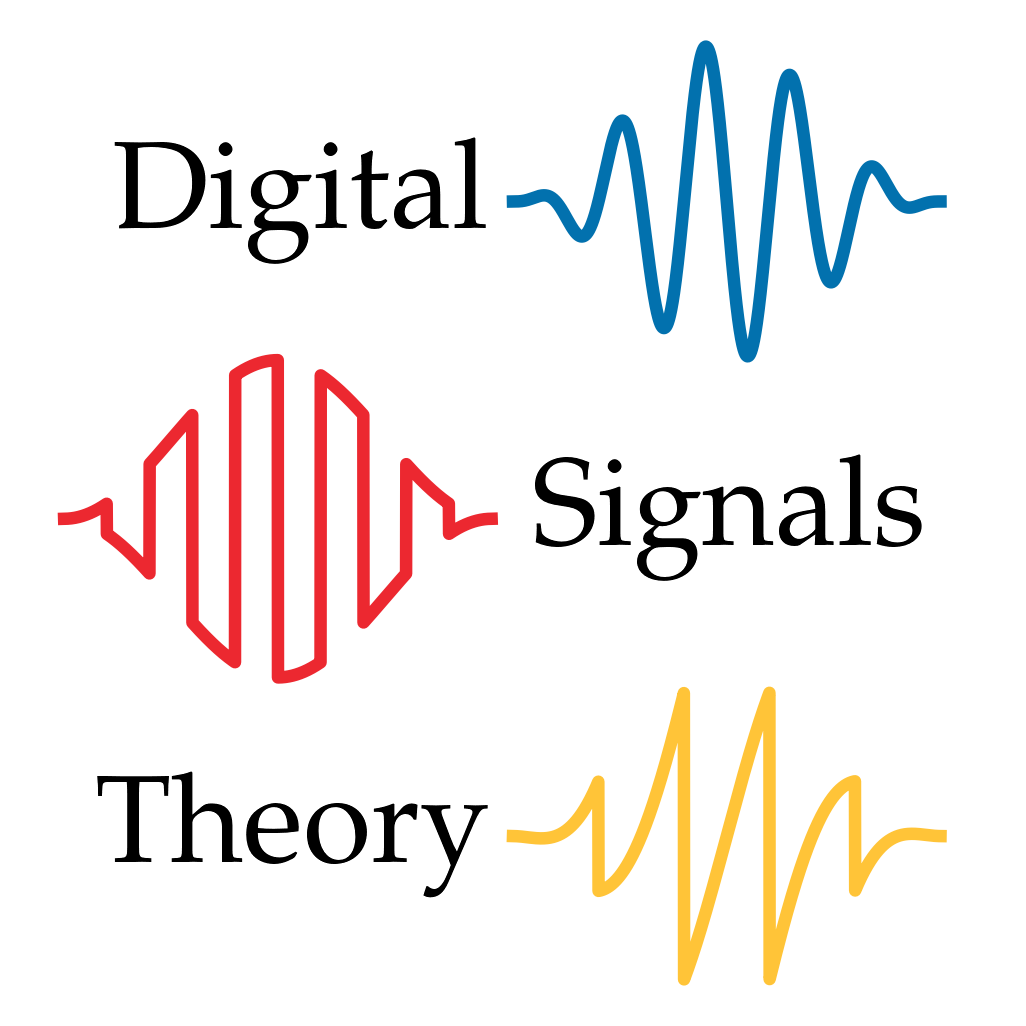Sets
Contents
Sets#
A set is a basic concept in mathematics used to define collections of elements. The technical underpinnings of set theory can get a bit tricky, but for our purposes, you can think of a set as any un-ordered collection.
Notationally, we use curly braces \(\{\}\) to denote a set. For example, we could have a set consisting of three colors defined as
Each of the three colors red, green, blue are elements of the set \(S\). The order of the elements in a set does not matter: the set above is equivalent to the set \(\{\text{blue},\;\text{green},\;\text{red}\}\). Repetition also does not matter: an element is either in the set or not.
We use the symbol \(\in\) (a funny-looking E, denoting element) to denote membership in a set:
and \(\notin\) to denote that an element does not belong to a set:
We won’t do too much with sets in this text, but the basic notation is helpful to have, especially when dealing with different types of numbers.
Number systems#
In digital signal processing, we use many kinds of numbers to represent different quantities. It’s helpful to have notation to specify exactly what kind of numbers we’re talking about, so here’s a brief list with their standard notations:
\(\mathbb{N}\), the natural numbers: \(\{0, 1, 2, 3, \dots\}\)
\(\mathbb{Z}\), the integers: \(\{\dots, -3, -2, -1, 0, 1, 2, 3, \dots\}\)
\(\mathbb{Q}\), the rational numbers (fractions): \(\left\{\frac{n}{m} ~\middle|~ n,m \in \mathbb{Z}, m \neq 0\right\}\)
\(\mathbb{R}\), the real numbers (i.e., the continuous number line)
\(\mathbb{C}\), the complex numbers: \(\{a + \mathrm{j}b ~|~ a,b \in \mathbb{R}\}\)
where \(\mathrm{j} = \sqrt{-1}\) is the imaginary unit.
Natural numbers (\(\mathbb{N}\)) are often used for whole number quantities, such as sample positions \(n\). Note that this means that the first sample will occur at index \(n=0\)!
Real numbers (\(\mathbb{R}\)) are often used for continuous quantities, such as angles (in radians), frequencies (in cycles/sec), or time (in seconds).
Complex numbers occupy a special place in signal processing because they turn out to be a great tool for modeling periodic processes.
